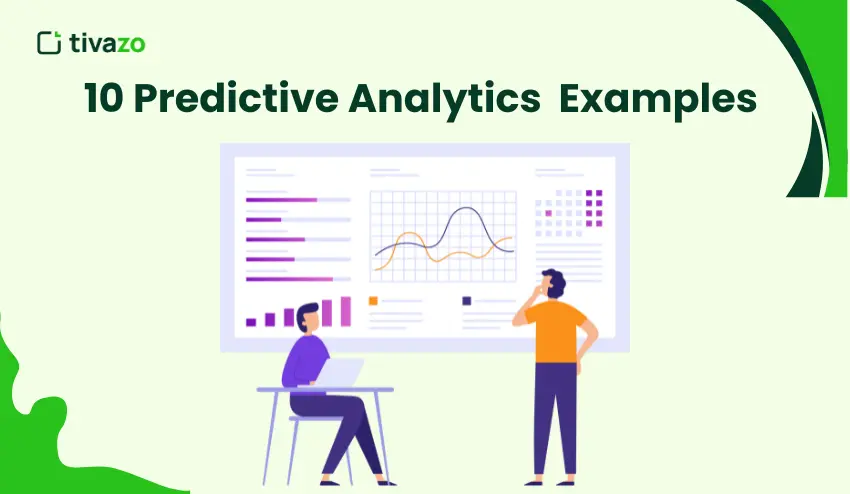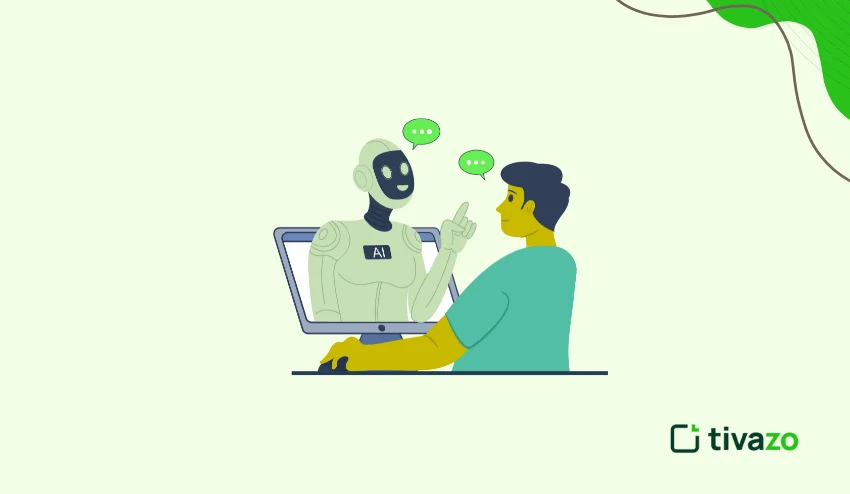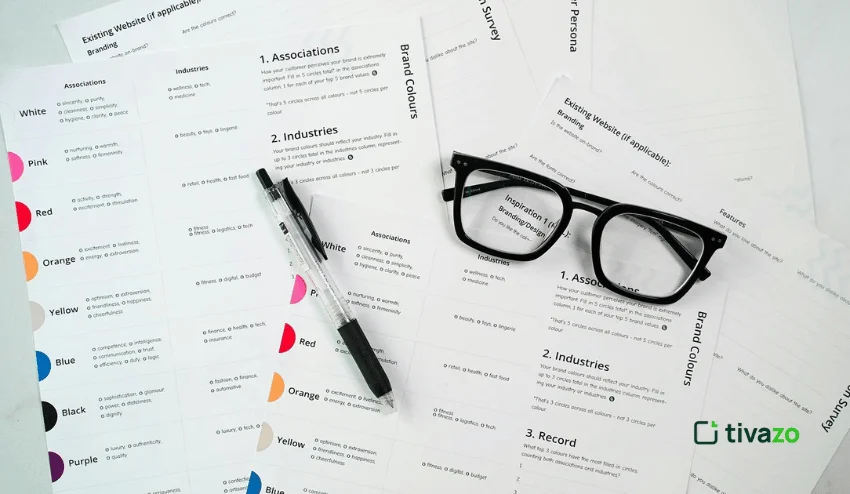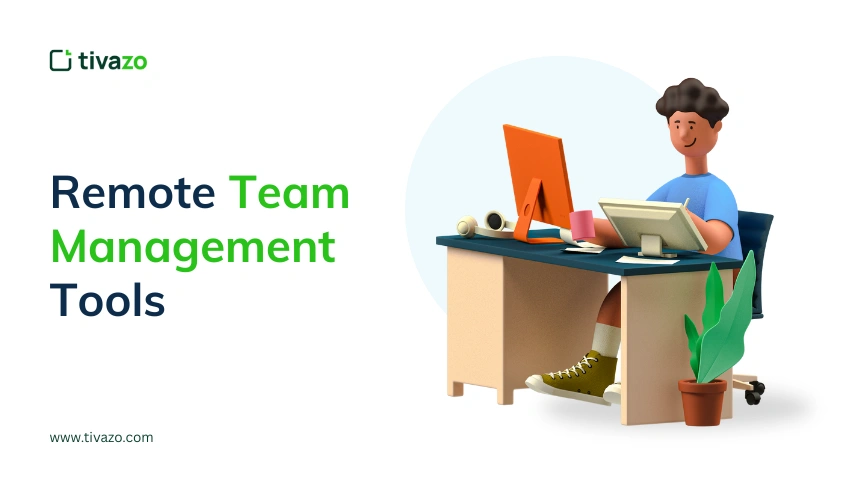Imagine your company can spot problems before it even happens. What if your business could know what your customers want before they say it, or prevent a machine from failing before it causes delays and problems? That’s what predictive analytics does. It’s like some smart assistant that analyzes past behavior, combines it with current available information, and then makes predictions to help businesses make faster and better decisions.
In this blog, we’ll explore 10 real-time predictive analytics examples used in professional environments by experts. These predictive analytics examples are taken from industries like healthcare, finance, retail, manufacturing, and transportation. We’ll show you how predictive analytics is making workplaces smarter, more efficient, and better prepared to handle the future all while using simple, easy-to-understand language.
What Is Predictive Analytics?
Predictive analytics is the process of using the right predictive analytics tools and techniques to study past and current data in order to make informed predictions about future events. For example, businesses collect information like sales numbers, customer feedback, website clicks, or machine activity and feed it into computer models. The patterns recorded are then used to predict what is likely going to happen.
When predictive analytics is done in real-time, it means the forecasts are being generated immediately, while data is being collected at the same time. This will let companies act quicker to opportunities or threats that may arise in the near future. The result? Smarter decisions, fewer mistakes, and better outcomes.
Types of Predictive Analytics
Predictive analytics is not a universal instrument; it has several varieties, each of which has its own purpose depending on the type of data and objectives that a company has. Being aware of these types can allow organizations to select the correct strategy to make wiser and quicker decisions. Here are the main types of predictive analytics used in professional environments:
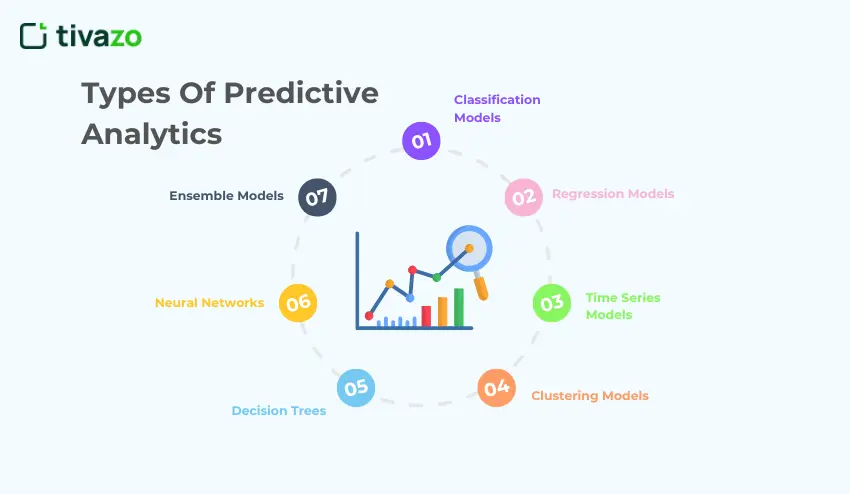
1. Classification Models
These models sort data into categories. An example would be that a bank could use classification to determine whether a loan applicant will repay or not. In healthcare, classification can help identify whether a patient falls into a high-risk group. It is particularly helpful when the result is either a definite yes or no.
2. Regression Models
Regression models predict a numeric value based on patterns in existing data. For example, a retail company might use regression to forecast next month’s sales based on past performance, seasonality, and promotional events. It’s widely used in finance, marketing, and real estate to estimate things like revenue, prices, or customer lifetime value.
3. Time Series Models
Time Series models are specially designed to make predictions over time, think of stock prices, energy usage, or website traffic. Time series models make use of historical data which are collected over a period and analyze patterns like trends and seasonality. Businesses use them to plan ahead and adjust operations in real time.
4. Clustering Models
Clustering Models as the name suggests cluster similar data together into a group. While not fully predictive on their own, these models help find hidden patterns that can help make better predictions. An example is a marketing team determining buying behaviors and grouping customers with related buying behaviors, followed by creating specific campaigns based on the latter.
5. Decision Trees
Decision trees operate by posing a set of questions relying on statistics: the questions are under the form of conditional-then such as, IF a, THEN b. The models are simple to comprehend as well as visualize and as a result they are popular in making business decisions. For example, an HR department can use a decision tree to predict which employees are most likely to quit based on factors like job satisfaction or promotion rate.
6. Neural Networks
The neutral network is inspired by the human brain. These networks are specially used for highly complex tasks such as image recognition, fraud detection, or natural language processing. They are excellent for spotting subtle patterns in large and unstructured data extraction sets. Neural networks are often used by companies with huge data sets such as technology companies and financial institutions in advanced predictive modeling.
7. Ensemble Models
Sometimes, using only a single model isn’t enough. Ensemble models combine different models to improve accuracy. They are able to aggregate results of different kinds (classification and regression, for instance) through averaging or weighting to the most accurate. Such approach is typically applied in those industries where the accuracy of prediction is of great importance, such as insurance and health care.
Use cases and Predictive Analytics Examples
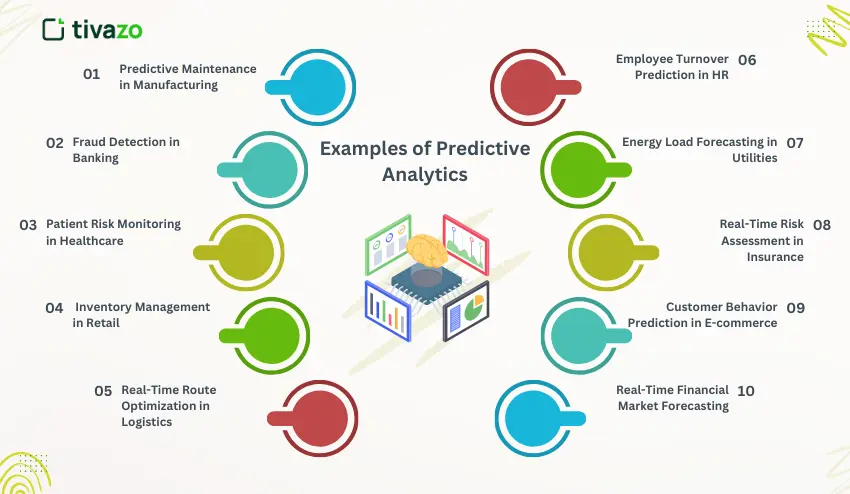
1. Predictive Maintenance in Manufacturing
In factories, machines are being used constantly. If one breaks down, it can cost thousands of dollars in delays. With the help of sensors on equipment we can collect data in real time. Information such as vibration levels, heat, or sound can help the companies to predict when a machine is likely to fail.
Using predictive analytics examples like this will help the maintenance teams find the problems in the machines and fix them before they break. This reduces the downtime, saves money, and keeps operations running smoothly. Companies like General Electric and Siemens make use of predictive maintenance in their plants every day.
2. Fraud Detection in Banking
Financial institutions use real-time predictive analytics to detect fraud as it happens. When a transaction is processed, the bank’s system compares it to past customer behavior. If the transaction looks unusual like a large purchase in another country it can flag or block it immediately.
This is one of the predictive analytics examples that can save banks millions of dollars and not to lose money on the part of customers. Firms like Visa, Mastercard, and PayPal apply this technology 24/7 in order to avoid any problem that can occur.
3. Patient Risk Monitoring in Healthcare
Hospitals are constantly using different machines and monitors for their patients. They collect continuous data from patients: heart rate, oxygen levels, blood pressure, and more. With the use of predictive analytics, they can quickly identify when a patient might be at risk of sudden decline even if their current vital signs are stable.
If a patient’s data pattern closely resembles those of other patients who previously experienced serious complications, predictive analytics can alert doctors in real time. This early warning will help the doctors easily notice the patterns and act before critical situations appear. This leads to faster treatments and fewer emergencies. Real-time predictive analytics examples like this are used in ICU units and emergency departments around the world.
4. Inventory Management in Retail
In the fast-paced world of retail, staying ahead of customer demand is very important. Customers will expect to find the product they want to be stocked and available when they need them. Therefore, retailers need to keep the right products on their shelves without overstocking.
With the use of predictive analytics we can analyze customer buying patterns, seasonal trends, and real-time sales data and forecast demand for products. If a product starts selling faster than expected, stores can order more and restock before running out.
This not only prevents lost sales but also helps avoid the cost of holding excessive inventory. Retail giants like Walmart and Target use predictive analytics examples like this to streamline their supply chains, helping them anticipate demand and keep shelves stocked.
5. Real-Time Route Optimization in Logistics
In logistics, timely and efficient deliveries are really important to keep the customers satisfied. Shipping companies make use of GPS data, real-time weather updates, and traffic reports when planning the most efficient routes for their deliveries.
One of the significant components of this process is predictive analytics because it can be used to estimate delivery time, rerouting delivery trucks in the case of traffic congestion or adverse weather conditions, and predicting delivery time of the packages. Not only do these predictive analytics examples enhance customer satisfaction through positive deliveries but it also aids in cost reduction of fuel to reduce the overall operation costs.
Industry leaders such as FedEx, UPS, and Amazon use these predictive analytics examples to streamline their logistics, enhance performance, and maintain a competitive edge in the fast-moving delivery market.
6. Employee Turnover Prediction in HR
Human resource departments are now using predictive analytics to understand which employees might be thinking about leaving. By analyzing attendance records, performance reviews, survey responses, and even email usage, HR teams can spot signs of disengagement.
These predictive analytics examples let companies intervene early by offering support, training, or career development opportunities. As a result, businesses can use predictive analytics examples like this to retain top talent and reduce the costs of hiring and onboarding.
7. Energy Load Forecasting in Utilities
Power companies need to predict how much electricity people will use so they can balance the load on the grid. Predictive analytics examples in this field involve real-time weather data, usage history, and demand spikes.
If energy usage is expected to rise suddenly, companies can activate backup systems or reduce supply to non-critical areas. This prevents blackouts and keeps the system stable. Utilities around the world rely on these predictive analytics examples to manage power efficiently.
8. Real-Time Risk Assessment in Insurance
Insurance companies use real-time data from connected devices, like car sensors or home monitoring systems, to assess risk on the fly. If a driver is speeding or braking hard often, their insurance rates might go up. If they drive safely, they might earn discounts.
These predictive analytics examples make pricing more fair and accurate. They also encourage safer behavior, benefiting both the company and the customer.
9. Customer Behavior Prediction in E-commerce
Online stores collect every click, scroll, and purchase a customer makes. Through the Google Analytics 4 connector, businesses can combine data from different platforms for a complete view of customer behavior. With real-time predictive analytics, they can suggest products the customer is most likely to buy, adjust prices based on interest, or send special offers at the right moment. They can also use a Google Maps Scraper to gather location-based customer insights, helping tailor promotions and inventory to local demand.
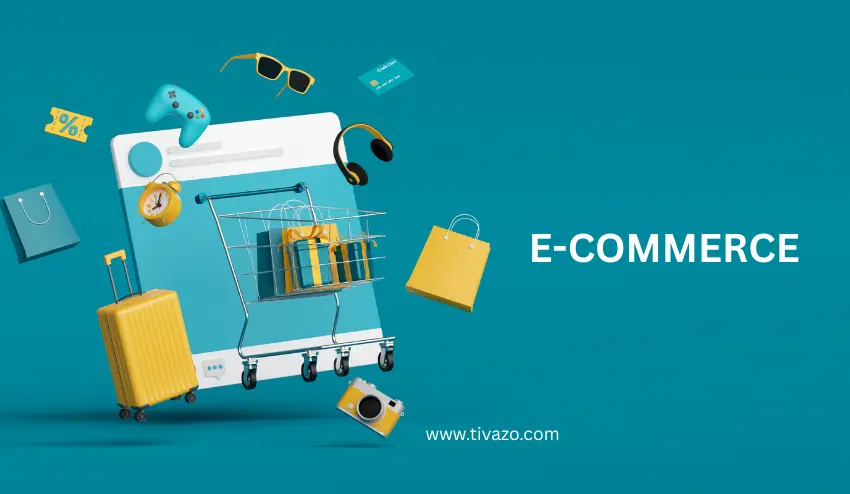
For example, if someone looks at a product three times but hasn’t bought it, the system might offer a discount. This leads to more conversions and better customer experiences. Using predictive analytics examples like this can help grow sales.
10. Real-Time Predictive Analytics Examples in Financial Market Forecasting
Traders and investment firms use predictive analytics to spot market trends before they happen. By analyzing stock prices, economic news, and social media in real time, these systems can predict price movements within seconds.
This allows firms to buy or sell assets faster than their competitors. Predictive analytics examples like these are used by hedge funds, investment banks, and fintech startups to gain an edge in fast-moving markets.
Conclusion
Predictive analytics isn’t just for tech giants, it is already a regular aspect of operations of contemporary businesses. It can be used in forecasting the needs of customers, as well as averting disasters, which keeps the companies in advance. The real-time predictive analytics examples demonstrate the effectiveness of data when it is used in the appropriate manner.
As more businesses begin to understand and adopt these predictive analytics examples with growing AI trends, we’ll see workplaces becoming more proactive, efficient, and responsive. Whether you’re in finance, HR, logistics, or healthcare, predictive analytics can offer you a smarter way to plan for tomorrow starting today.
